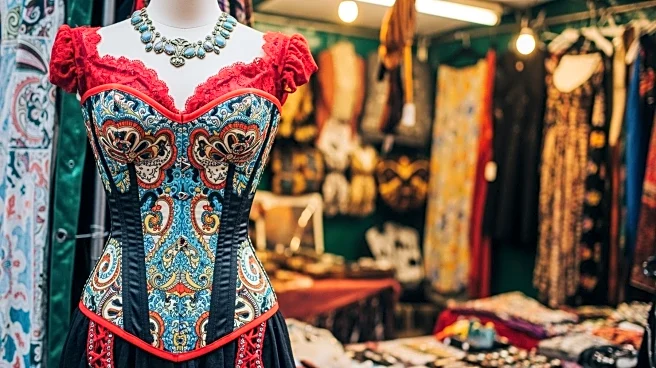What's Happening?
Tim Curry, renowned for his role as Dr. Frank-N-Furter in The Rocky Horror Picture Show, revealed in his autobiography that the iconic corset worn by his character was originally purchased from a Glasgow
market. The corset was acquired by costume designer Sue Blane during Curry's performance in The Maids at the Citizens Theatre in 1971. This Victorian corset, initially used in a production of Jean Genet's play, was later repurposed for Rocky Horror, contributing to the film's distinctive aesthetic. The Rocky Horror Picture Show, a musical horror-comedy, follows a couple's bizarre encounter with Dr. Frank-N-Furter after a car breakdown. The corset's Glasgow origins highlight the city's influence on the cult classic's visual style.
Why It's Important?
The revelation of the corset's origins underscores the significance of local craftsmanship and resourcefulness in theatrical productions. The Rocky Horror Picture Show has become a cultural phenomenon, celebrated for its unique style and narrative. The corset's Glasgow connection adds a layer of historical and cultural depth to the film, illustrating how small, local contributions can have a lasting impact on global entertainment. This story also highlights the creative ingenuity of costume designers like Sue Blane, who utilized limited resources to create memorable and iconic costumes that have endured in popular culture.
What's Next?
The continued interest in the origins of The Rocky Horror Picture Show's costumes may inspire further exploration into the history of theatrical design and its influence on film. As the Citizens Theatre in Glasgow reopens, there may be renewed attention on its role in nurturing unconventional and avant-garde productions. This could lead to increased recognition of the theatre's contributions to the arts and its impact on performers like Tim Curry. Additionally, the story may encourage costume designers to explore innovative approaches in their work, drawing inspiration from historical and local sources.
Beyond the Headlines
The story of the corset's origins touches on broader themes of cultural exchange and the interconnectedness of global artistic communities. It highlights how local traditions and markets can influence international art forms, fostering a sense of shared cultural heritage. The narrative also reflects the importance of preserving and celebrating the history of theatrical spaces like the Citizens Theatre, which have played pivotal roles in shaping the careers of influential artists and productions.











